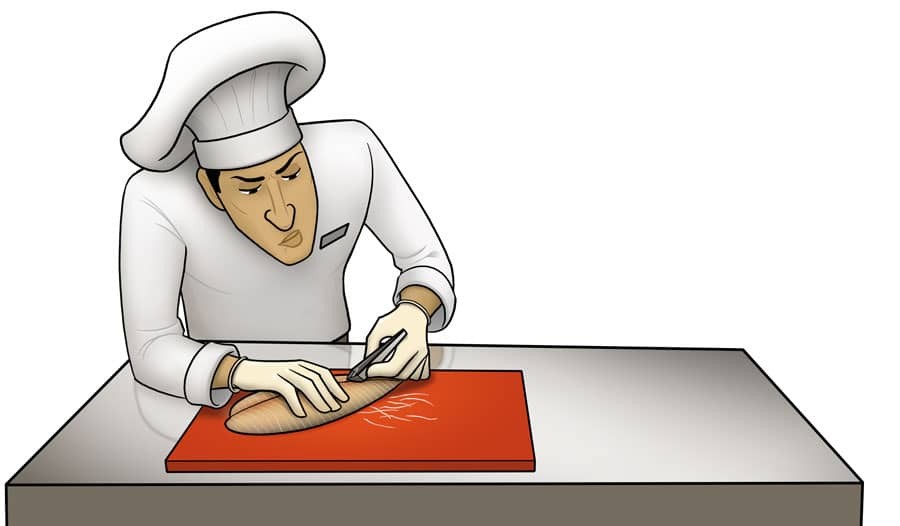Ensuring food safety is paramount in any food service establishment. A key aspect of this is understanding and preventing physical hazards in food. These hazards can cause injury or illness to customers, leading to serious consequences for your business. This guide will provide a detailed overview of How To Prevent Physical Hazards In Food, ensuring a safe and enjoyable dining experience for your customers.
Understanding Physical Hazards
A physical hazard is any foreign object in food that can cause harm if ingested. This includes items that can choke, cut, or otherwise injure a customer. These hazards can be introduced at any stage of food preparation, from delivery to service. Recognizing and mitigating these risks is crucial for maintaining food safety standards.
Types of Physical Hazards
Physical hazards can be broadly categorized into two types:
- Naturally Occurring: These are inherent parts of the food product, such as bones in fish or pits in fruits.
- Accidental Contaminants: These are foreign objects that unintentionally find their way into food, such as glass shards, metal fragments, plastic pieces, hair, or jewelry.
Understanding the sources of these hazards is the first step in preventing them.
 A chef removes a physical hazard, bone, from fish.
A chef removes a physical hazard, bone, from fish.
Implementing Preventative Measures
Preventing physical hazards requires a multi-faceted approach that includes proper training, equipment maintenance, and stringent hygiene practices.
Employee Training and Awareness
Comprehensive training programs are essential for educating food handlers about potential physical hazards and how to prevent them. Training should cover the following areas:
- Hazard Identification: Employees should be able to identify potential physical hazards commonly found in your establishment.
- Removal Techniques: Training should include proper techniques for removing naturally occurring hazards like bones from fish or pits from fruit.
- Equipment Inspection: Employees should be trained to regularly inspect equipment for signs of wear and tear that could lead to physical contamination, such as loose screws or chipped plastic.
- Personal Hygiene: Emphasize the importance of personal hygiene practices to prevent accidental contamination.
Best Practices for Food Handling
Adhering to strict food handling practices can significantly reduce the risk of physical hazards. Consider the following guidelines:
- Proper Attire: Employees should wear clean uniforms, hairnets or hats, and remove jewelry before handling food.
- Hand Hygiene: Frequent and thorough handwashing is crucial.
- Ingredient Inspection: Carefully inspect all ingredients upon arrival for any signs of contamination.
- Equipment Maintenance: Regularly inspect and maintain all kitchen equipment to prevent breakdowns that could introduce physical hazards.
- Waste Disposal: Properly dispose of food waste to prevent cross-contamination.
Specific Hazard Prevention Strategies
Addressing specific types of physical hazards requires targeted strategies.
- Glass: Use shatterproof bulbs and regularly inspect glassware for chips or cracks.
- Metal: Use metal detectors where appropriate and regularly inspect equipment for loose metal parts.
- Plastic: Avoid using brittle plastic containers that could break easily.
- Hair: Enforce strict hair restraint policies and provide employees with hairnets or hats.
Establishing a Reporting System
Encourage employees to report any potential hazards they identify. A clear reporting system ensures that potential issues are addressed promptly.
Complying with Regulations and Standards
Adhering to food safety regulations and standards is critical for maintaining a safe and compliant establishment.
FDA Food Code
The FDA Food Code provides guidelines for preventing physical hazards. Key recommendations include:
- Personal Hygiene: Maintaining high standards of personal hygiene to prevent contamination.
- Equipment Maintenance: Ensuring all equipment is properly maintained and in good repair.
- Hazard Removal: Implementing procedures to remove naturally occurring hazards during food preparation.
Regular Inspections
Conduct regular self-inspections to identify potential hazards and ensure compliance with regulations. Simulate health inspections to prepare employees and identify areas for improvement.
Conclusion
Preventing physical hazards in food is an ongoing process that requires vigilance, training, and a commitment to food safety. By implementing the strategies outlined in this guide, you can create a safer environment for your customers and protect your business from potential liabilities. Regularly review and update your practices to stay ahead of emerging risks and maintain the highest standards of food safety.
